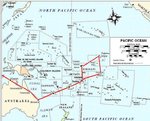buffnut453
Captain
That cuts both ways. Japan did not have all that many aircraft during December 1941. Nothing at all like what Germany had to face from 1943 onward in places like Tunisia, Sicily and Salerno. Furthermore airpower is inheritly less effective in the jungle. Well trained and led British troops could have simply shrugged off the Japanese air raids just as German soldiers did.
Colin,
You're quite right. According to the Japanese Monograph dealing with the air campaign for Malaya and Singapore, the IJAAF never managed to replace losses so any substantive extension to the duration of the campaign would have been presented huge problems for the IJAAF.
Cheers
B

